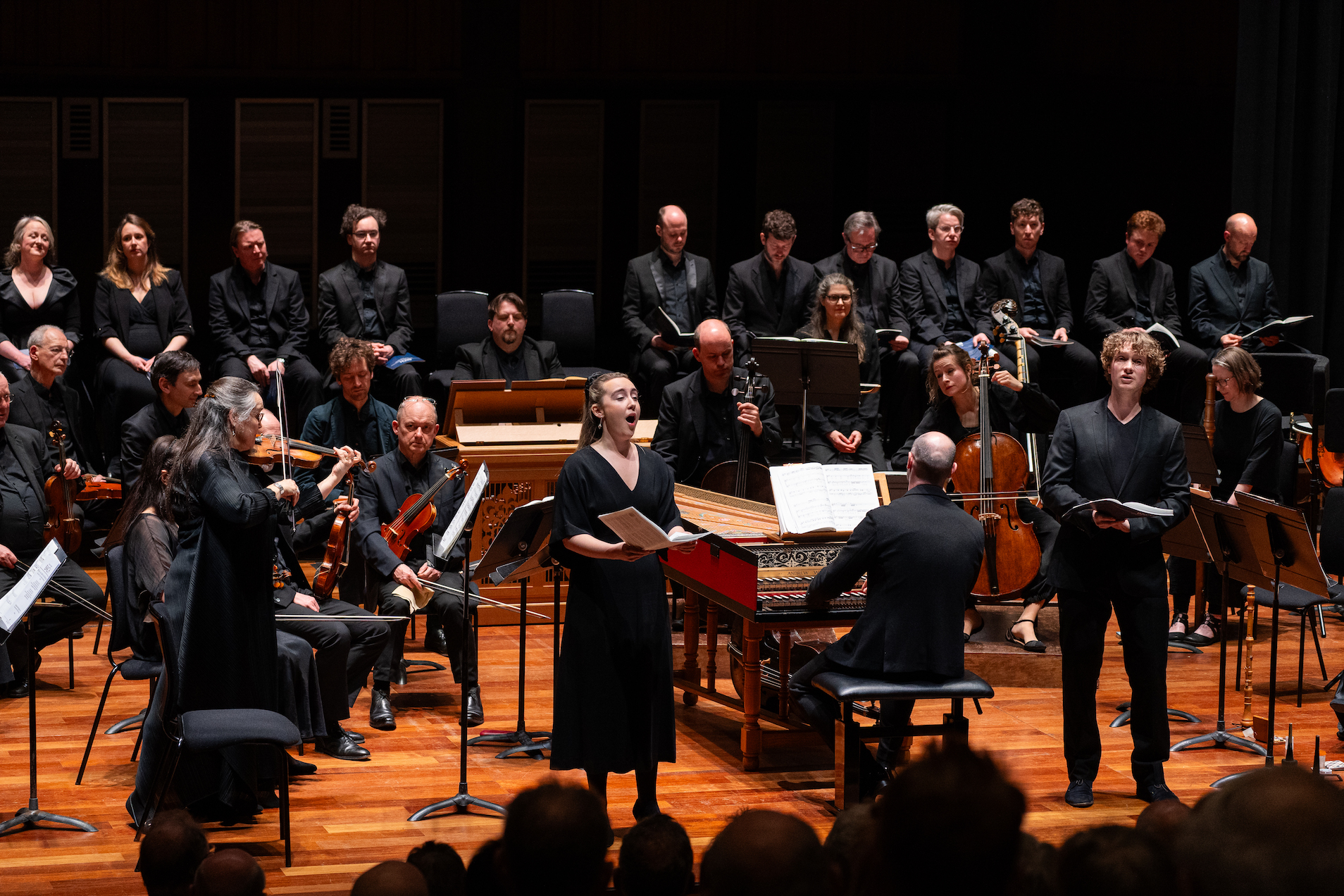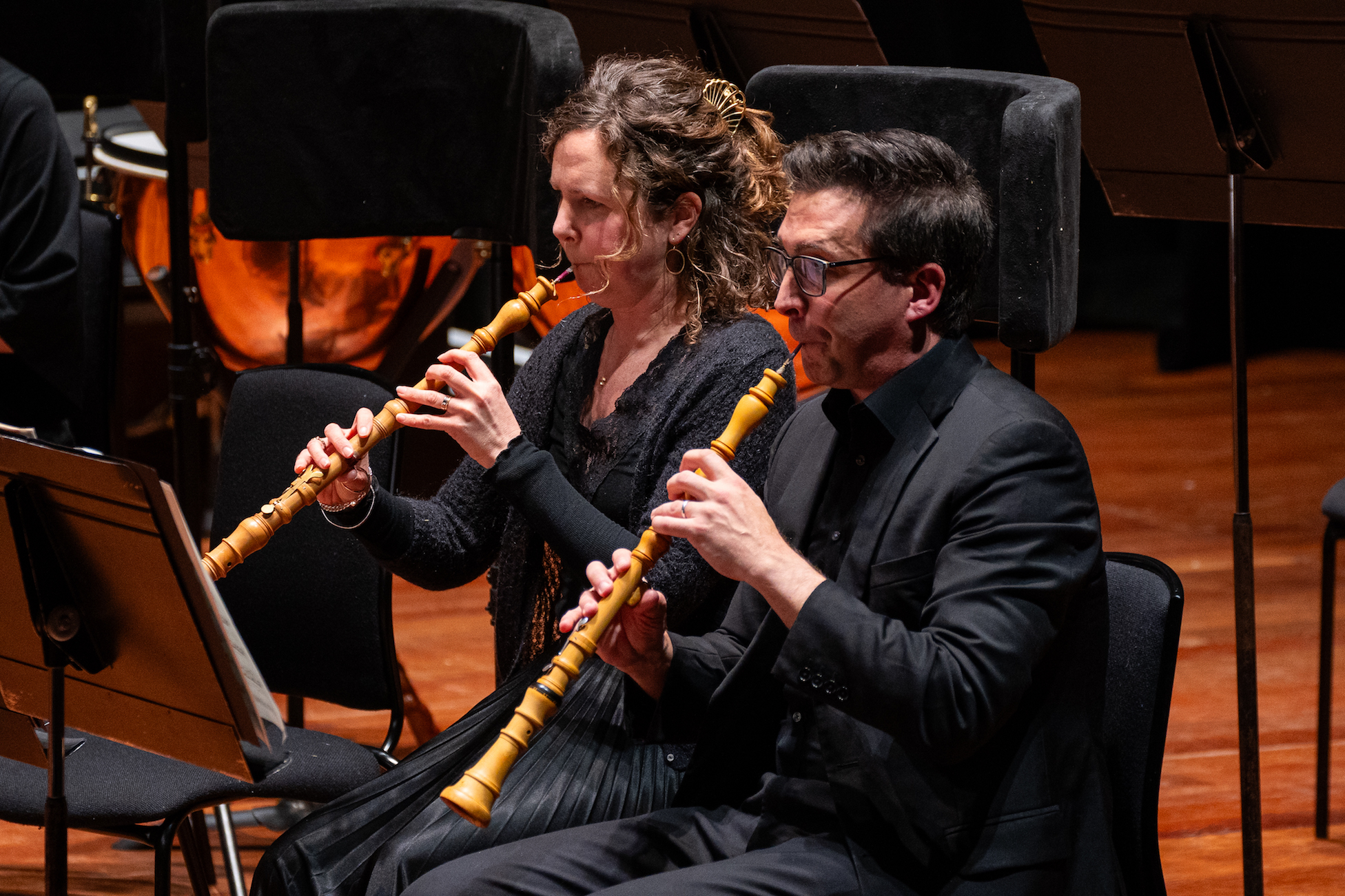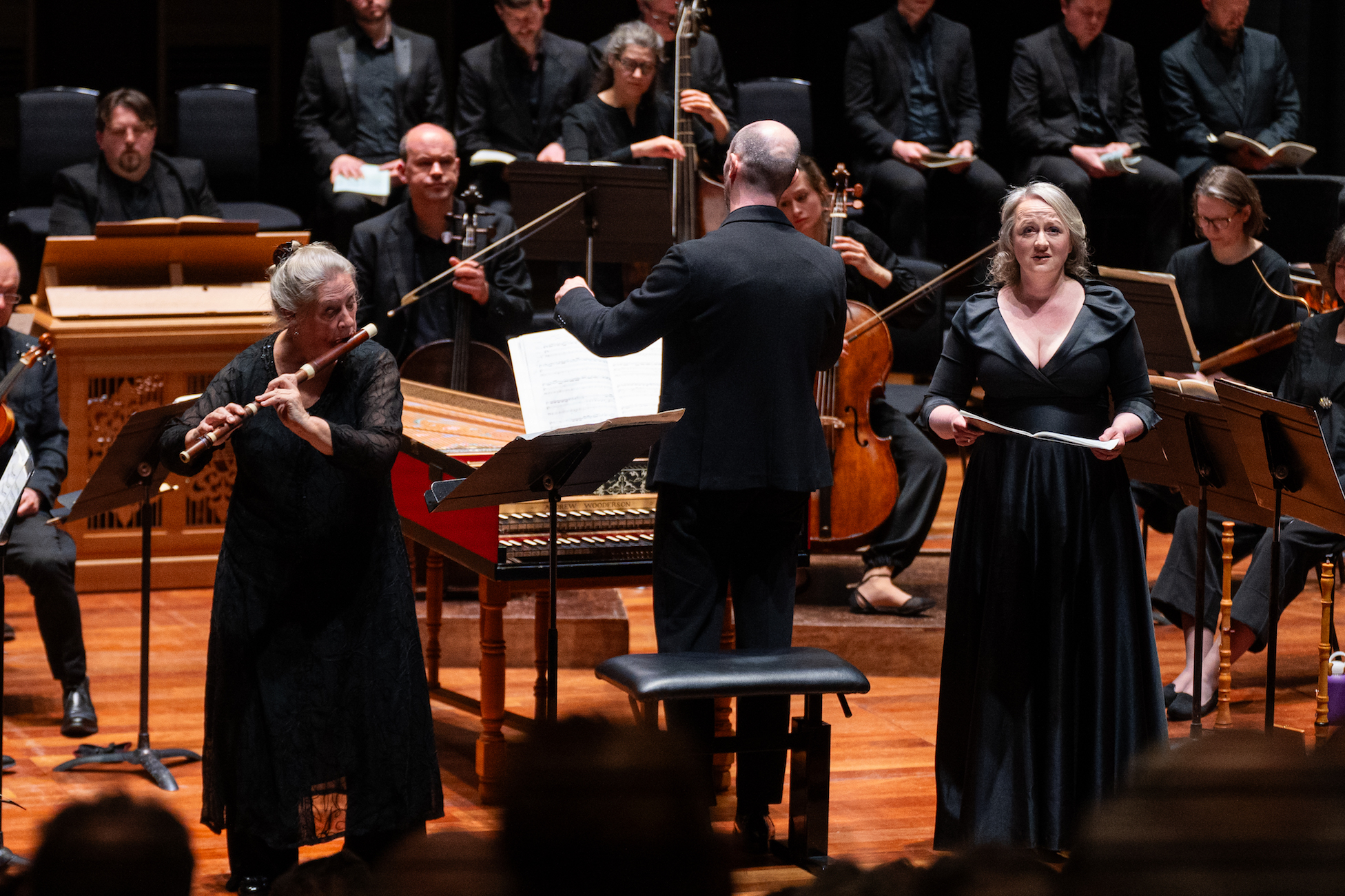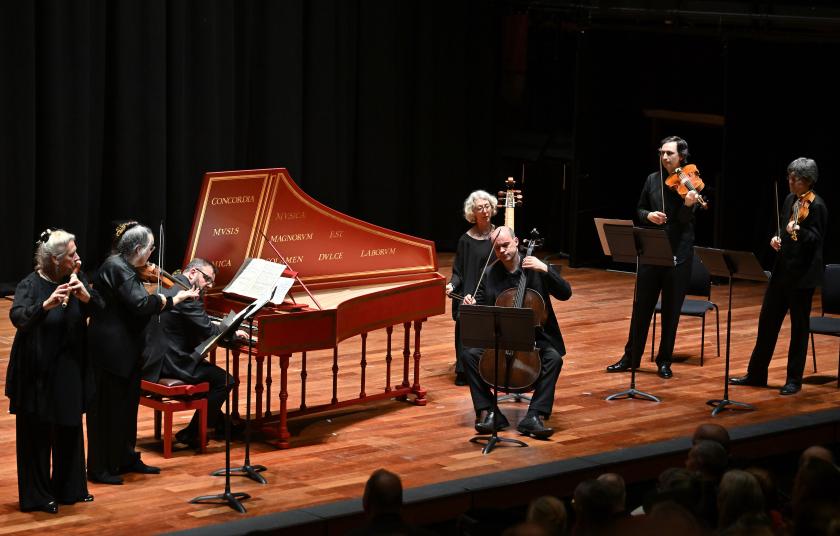Waiting, and hoping, may prove just as intense an experience as the fulfilment of a wish – or of a fear. Bach knew that, and infused his Easter Week music with a sense of suspense and anticipation built into vocal and instrumental lines that build and strive and stretch towards a climactic revelation that, until the very end, remains just out of reach.
At the Queen Elizabeth Hall, Peter Whelan – much-garlanded director of the Irish Baroque Orchestra – led the Orchestra (and Choir) of the Age of Enlightenment (along with a quartet of accomplished soloists) in a programme that prefaced the often-overlooked Easter Oratorio of 1725 with two cantatas, BWV 66 and 6, designed for the same liturgical season. The dramatic package that resulted may not quite equal the sublime emotional journeys of the Matthew and John Passions, but Whelan and his team exuberantly brought to life a springtime Bach with music rich in aspiring zest.  Indeed, the sheer jollity that launches BWV 66, Erfreut euch, ihr Herzen, quickly shakes off the sombre soul-searching of Holy Week. David Blackadder and his OAE trumpet trio exulted with brash jubilation while the timpani (Adrian Bending) thundered joyfully. This work (like the Easter Oratorio itself) has roots in repurposed secular music; warmly confident contributions from Malachy Frame’s baritone and Ruairi Bowen’s tenor maintained the high spirits that tend to puncture any drift into solemnity. Even the thoroughly operatic dialogue between hope and fear (featuring Bowen and the richly expressive mezzo, Rebecca Leggett) never gives despair the upper hand. And the ravishing violin solo from the OAE’s always-outstanding leader Margaret Faultless supplied extra cause for celebration (pictured above, with Rebecca Leggett and Ruairi Bowen).
Indeed, the sheer jollity that launches BWV 66, Erfreut euch, ihr Herzen, quickly shakes off the sombre soul-searching of Holy Week. David Blackadder and his OAE trumpet trio exulted with brash jubilation while the timpani (Adrian Bending) thundered joyfully. This work (like the Easter Oratorio itself) has roots in repurposed secular music; warmly confident contributions from Malachy Frame’s baritone and Ruairi Bowen’s tenor maintained the high spirits that tend to puncture any drift into solemnity. Even the thoroughly operatic dialogue between hope and fear (featuring Bowen and the richly expressive mezzo, Rebecca Leggett) never gives despair the upper hand. And the ravishing violin solo from the OAE’s always-outstanding leader Margaret Faultless supplied extra cause for celebration (pictured above, with Rebecca Leggett and Ruairi Bowen).
Alhough Bach weaves BWV 6 (“Bleib bei uns”), his so-called “Emmaus cantata”, out of gloomier cloth, its atmosphere of wistful, apprehensive yearning feels in these hands more much steadfast than downcast. The OAE choir of 17 (including the four soloists) delivered controlled, contrapuntal ferocity from their single line behind the players, with darkly gorgeous colours from th cellos (Luise Buchberger, Andrew Skidmore) and bass (Christine Sticher). In their aria the five sopranos united into a perfectly blended, and quietly moving, quintet, with the work’s eventide “Abide with me” mood captured in singing and playing of warm, engaging fortitude.  As for the Easter Oratorio itself, it began in another tonic blaze of trumpet-and-timpani glory before the festive Sinfonia yielded to an Adagio distinguished by plaintive strings and the fluent, questing melancholy of Daniel Bates’s oboe solo (pictured above, with Sarah Humphrys). Whelan, directing from the harpsichord, brought a rhythmic grace and flexibility to many of Bach’s more meditative passages that gave a fresh colouring to the oratorio's later dialogues between singers and obbligato solo instruments.
As for the Easter Oratorio itself, it began in another tonic blaze of trumpet-and-timpani glory before the festive Sinfonia yielded to an Adagio distinguished by plaintive strings and the fluent, questing melancholy of Daniel Bates’s oboe solo (pictured above, with Sarah Humphrys). Whelan, directing from the harpsichord, brought a rhythmic grace and flexibility to many of Bach’s more meditative passages that gave a fresh colouring to the oratorio's later dialogues between singers and obbligato solo instruments.
Tenor and baritone powerfully parried and knitted their voices of hope in “Kommt eilet und laufet”, as the four solo characters (originally named by Bach as Mary Magdalene, Mary, mother of Jacob, Simon Peter, and John the Apostle) hurry to Jesus’s empty tomb. Three arias in particular make you wonder why this work stands somewhat in the shadows of the twin Passions. Miriam Allan’s splendid soprano quasi-cantata (“Seele, deine spezereien”), partnered by the exquisitely eloquent transverse flute of Lisa Beznosiuk, grows into a gently impassioned soliloquy to match anything in the grander Easter dramas (pictured below). Ruairi Bowen struck and sustained a fine vein of luxurious ardour in his death-defying aria, “Sanfte soll dein Todeskummer”, while Rebecca Leggett thrillingly unleashed a wholly operatic – even erotic – passion in the Magdalene’s song of blissful longing, “Saget, saget mir geschwinde”.  Devotees of chaste and subdued Holy Week Bach might have felt startled, even affronted. But Whelan and the OAE never stinted on the tingling, even panting, excitement that Bach embeds in these dance-like later movements of the oratorio. We end at the beginning, in a briefly exultant chorus that heralds the resurrected “Lion of Judah”. Whelan’s singers and ensemble defined and celebrated a bracing, even cheerful, Passiontide composer – creator of a music that floods uplifting light into the darkest night of the soul.
Devotees of chaste and subdued Holy Week Bach might have felt startled, even affronted. But Whelan and the OAE never stinted on the tingling, even panting, excitement that Bach embeds in these dance-like later movements of the oratorio. We end at the beginning, in a briefly exultant chorus that heralds the resurrected “Lion of Judah”. Whelan’s singers and ensemble defined and celebrated a bracing, even cheerful, Passiontide composer – creator of a music that floods uplifting light into the darkest night of the soul.















Add comment